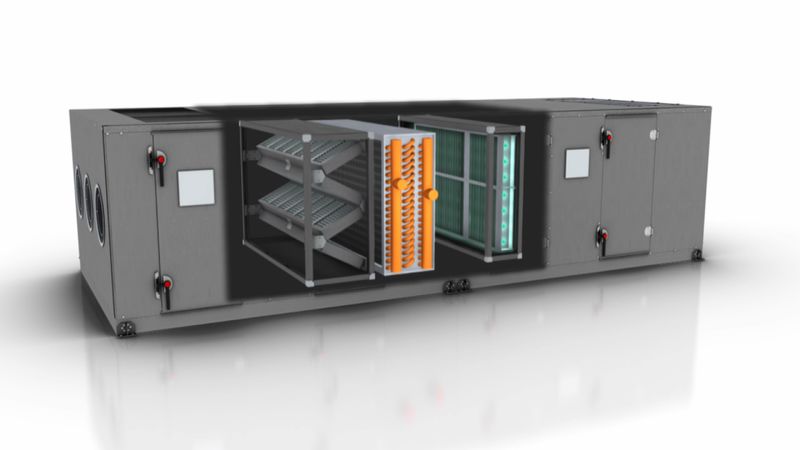Trane Catalytic Air Cleaning System

Trane Catalytic Air Cleaning System
The TCACS is far more than an air filter. It’s a one-of-a-kind blend of three technologies: filtration, germ-killing ultraviolet light, and a photocatalytic oxidation (PCO) process.
Neutralize and reduce organic contaminants in your air with the Trane Catalytic Air Cleaning System
Stand in your building’s lobby and take a deep breath. You followed all building codes. Your ventilation system is bringing outside air into your building. But does it feel fresh? Is it as clean as you want it to be?
Outside air can contain contaminants. People bring germs into the building. And any new furnishings added to the building often introduce odor and volatile organic compounds (VOCs). Even though your HVAC system has filters, you may still be circulating germs, viruses, VOCs and other gases that are too small to be captured. Equipping your air handler with a Trane Catalytic Air Cleaning System (TCACS) can help reduce biological organisms such as spores, bacteria and even the tiniest viruses. It can also reduce irritating odors from organic compounds such as fumes from paint, glue and cleaning chemicals, and capture airborne particulates like dust and mold.
Here's How It Works
Air entering the TCACS passes first through a MERV 13 high-efficiency particulate filter, which captures many of the larger biological contaminants and small airborne particles such as mold spores and pollen.
Viruses, odors, VOCs and micro-organisms pass through the filter and into the TCACS’ ultraviolet germicidal irradiation (UVGI) area, where they are exposed to a high-intensity ultraviolet light. This UV radiation penetrates microorganisms such as fungi, bacteria and viruses and damages their DNA bonds, sterilizing them.
As the air is being exposed to UVGI, it’s also passing through a mesh panel coated with titanium dioxide (TiO2 ). When subjected to ultraviolet photons, TiO2 creates hydroxyl radicals, one of the most powerful oxidizing agents in nature. As air passes through this ultraviolet-powered catalyst, the radicals oxidize gaseous organic compounds, such as odors and VOCs, reducing them to minute amounts of harmless carbon dioxide and water. The radicals and UV light work together to inactivate and decompose organic contaminants.












































































